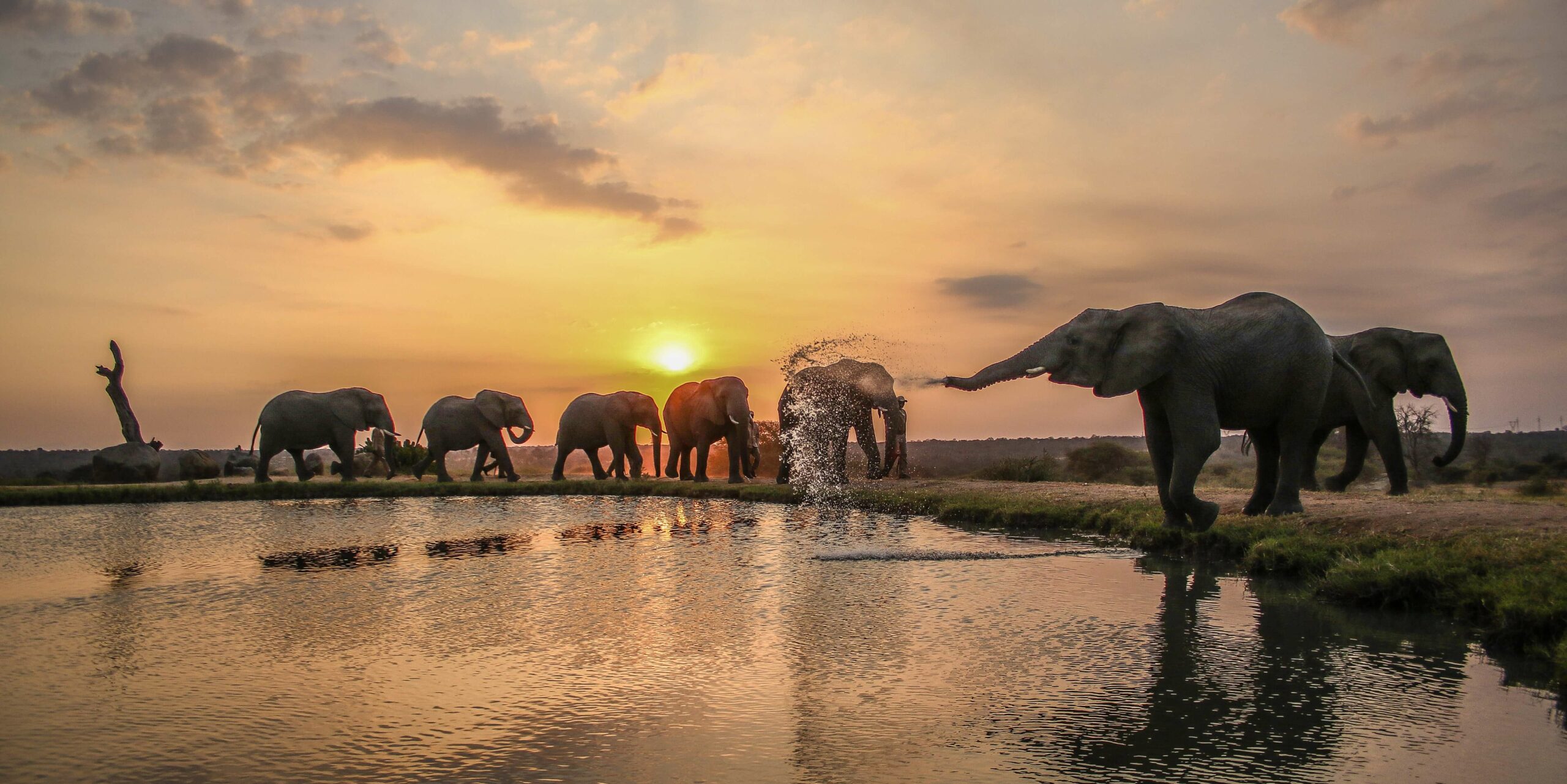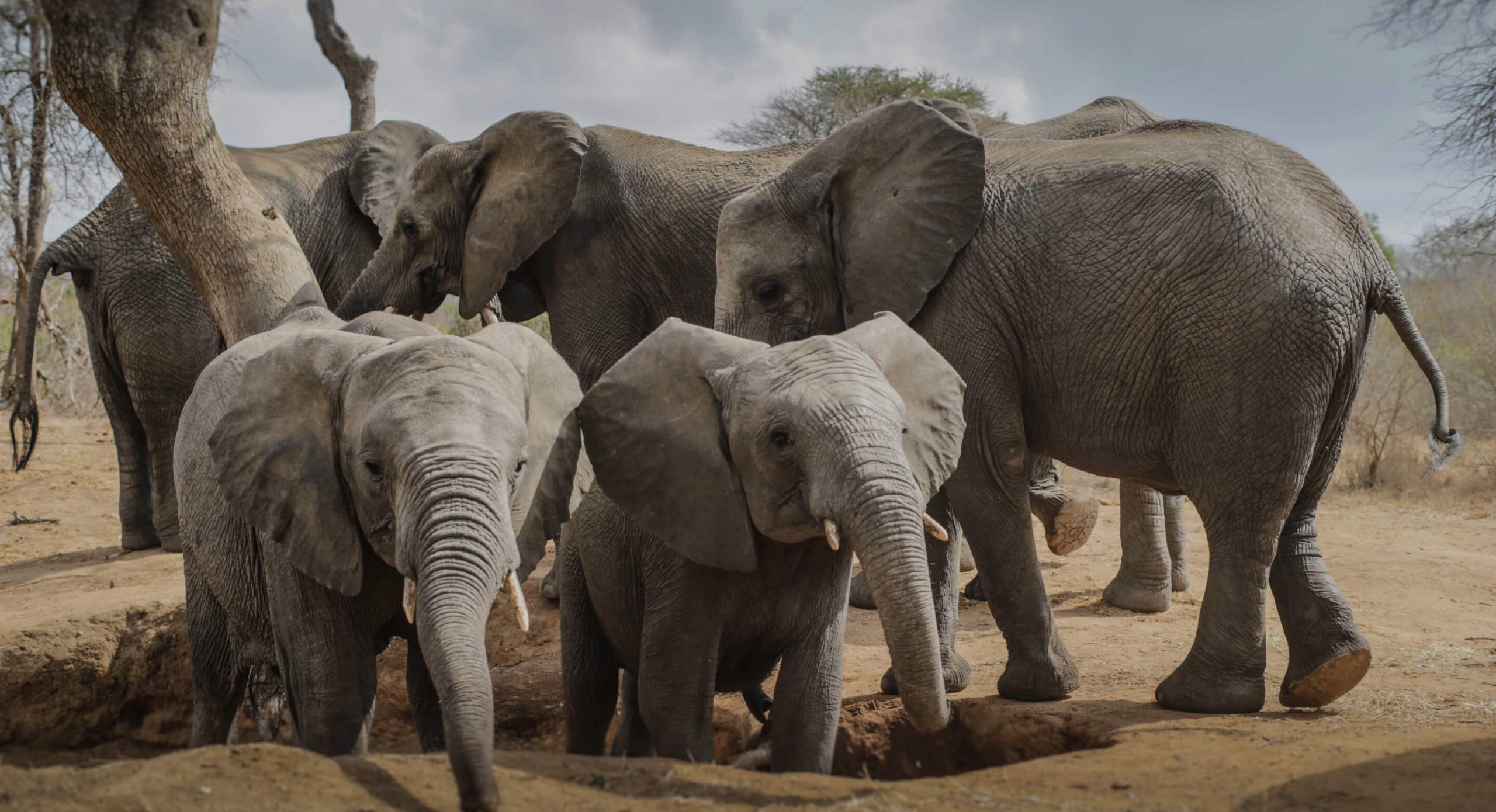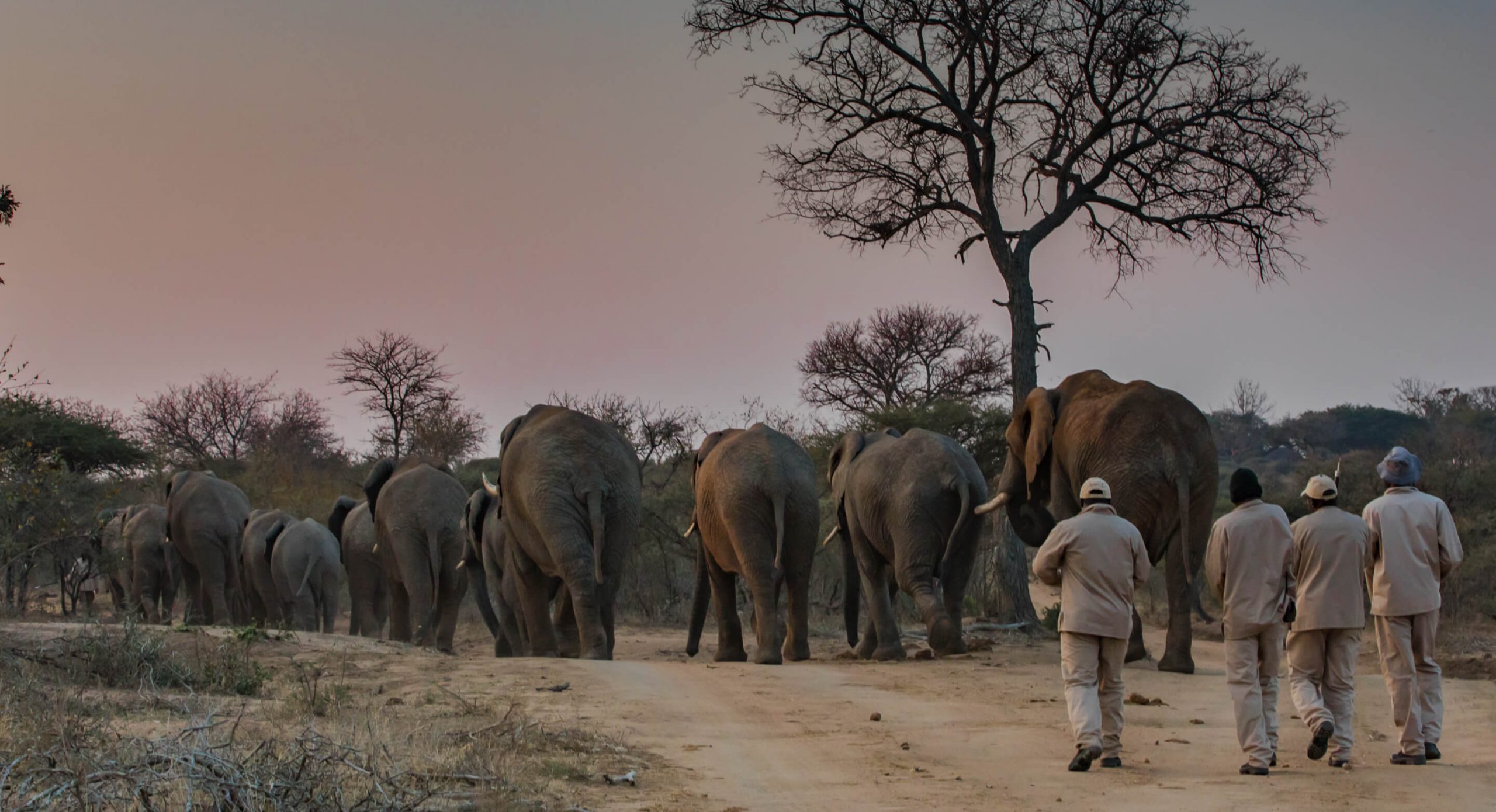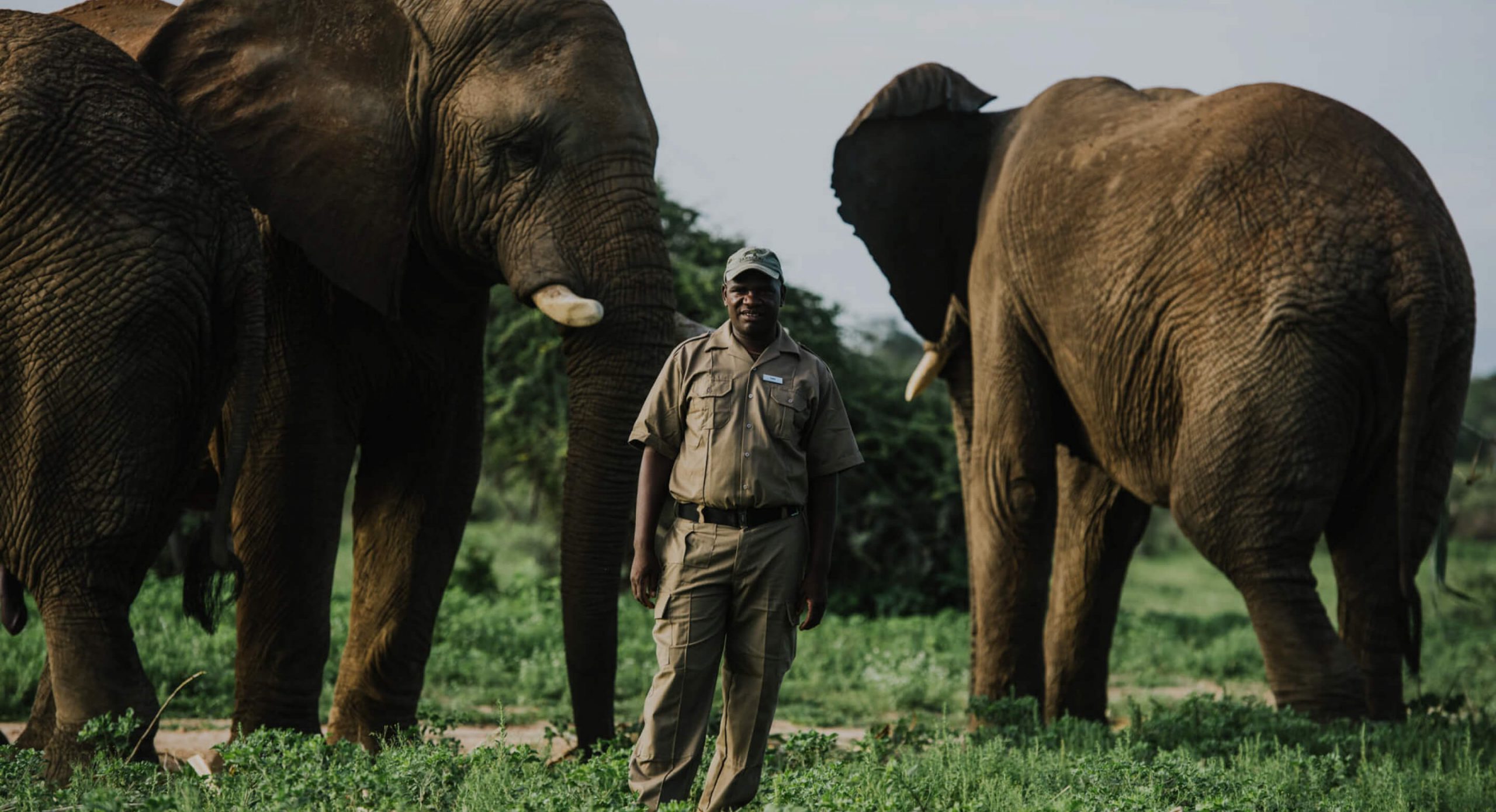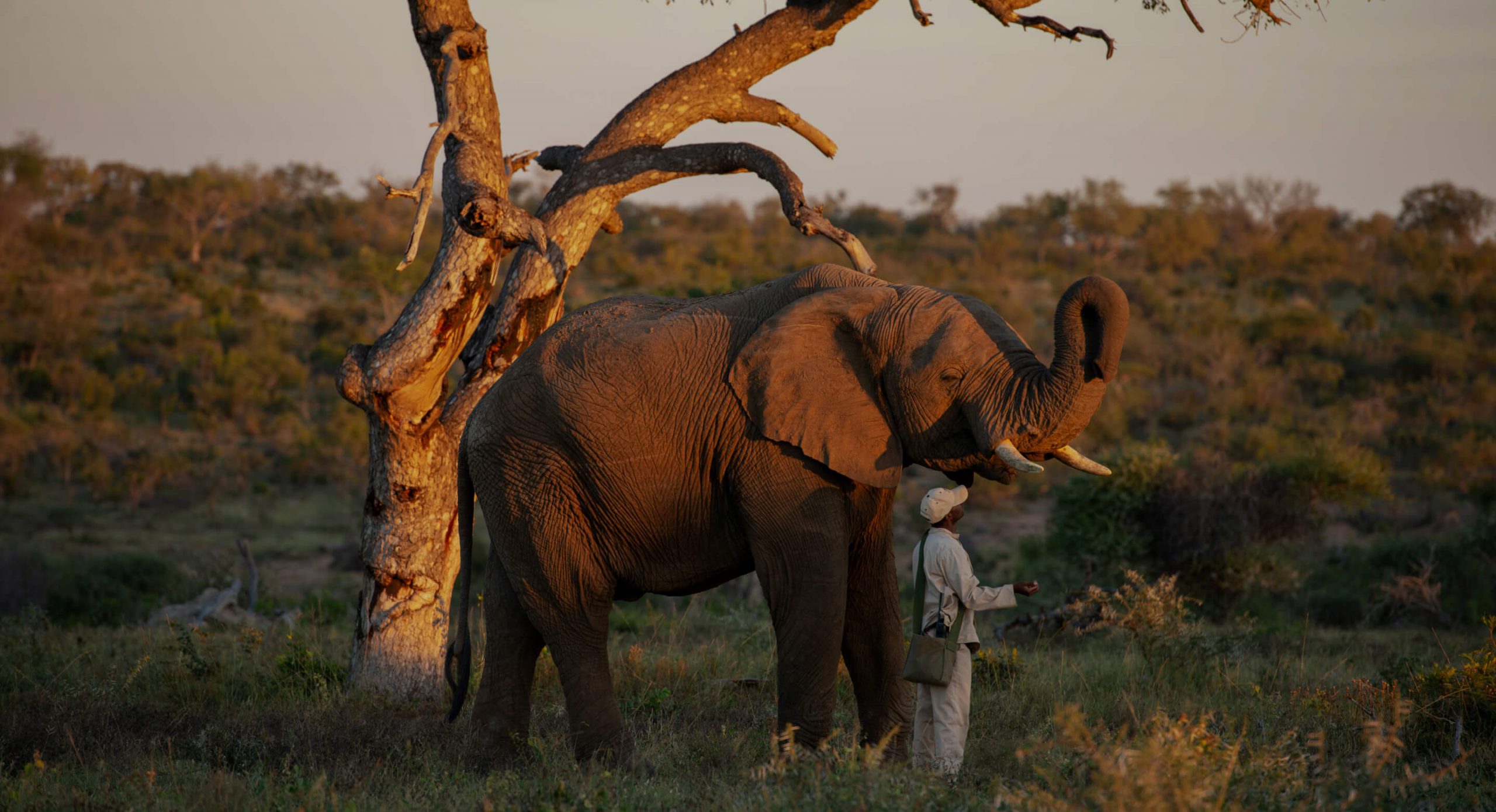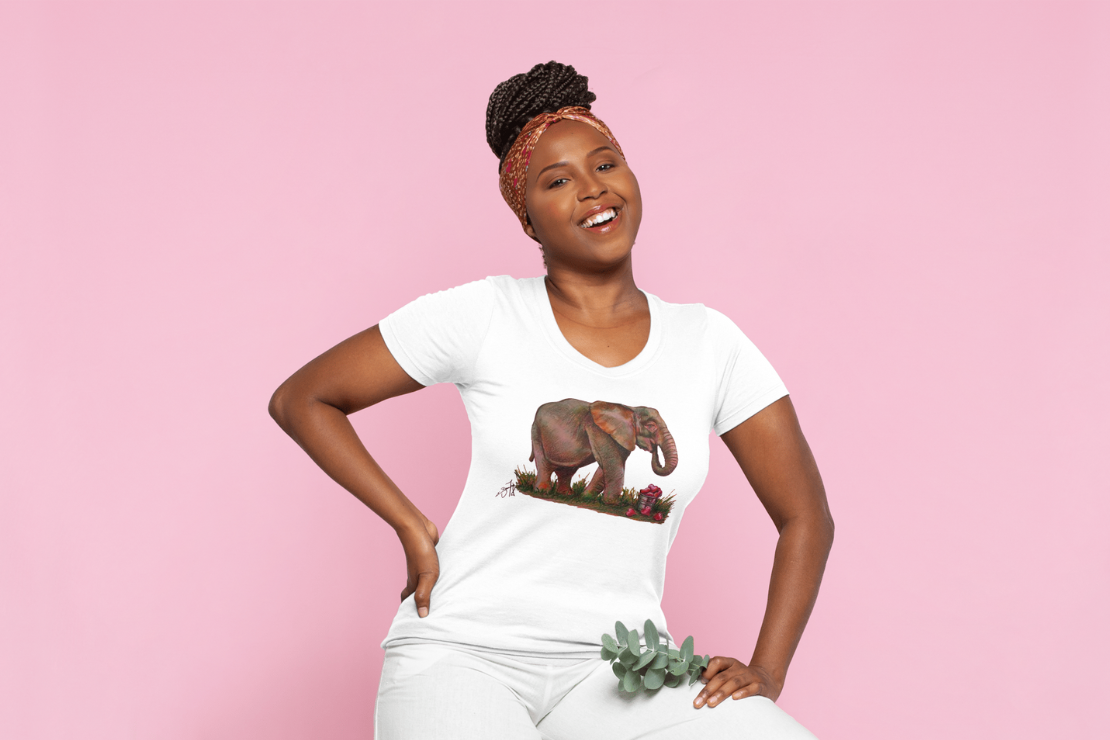
Ever wanted to know what it would be like to be an elephant in the rescued herd for a day? Here is a look at a day in the life of this unique blended family.

In the morning
The rescued herd stays in the homestead overnight, waking up to a new morning and grazing in the garden or from the provided bana grass, lucerne and branches provided for the elephants daily, or drinking from the freshwater troughs. The herd is split into four quadrants overnight in their expansive homestead where a protective canopy covers an open-air area with gardens stretching outward. This separation is to keep the older bulls from fighting or sparring overnight and potentially hurting the other elephants, as this blended herd is unique in having older bulls along with cows and youngsters.
The herd are split into: Jabulani, Lundi and her son Mambo; Tokwe the Matriarch with bull Fishan, and the youngsters: orphans Kumbura and Timisa, and Limpopo and Pisa (Tokwe’s daughters); Sebakwe the dominant bull with Setombe, the eldest cow, and her daughter Klaserie; Bubi and her son, Zindoga and bull, Somopane. These groupings are also chosen based on which elephants bond together, blood relations, and the needs of the individuals.
At sunrise, some elephants may still be sleeping, but they all soon start to stir and prepare to head out for the day. Each morning the carers check the rescued herd for any wounds or treatments needed, such as bull, Fishan who needs daily cleaning for his pressure wound, created due to his leg injury that causes him to favour the one side of his body when sleeping.

Once the sun is up, the orphans from the orphanage will join the herd and the elephants will all head out into the bush surrounding the homestead, to spend up to 12 hours foraging together, roaming, swimming, bonding, playing, mud and sand bathing, or resting out in our Big 5 reserve.
The herd’s carers accompany them to protect them and keep the herd together, for their own safety as animals who are familiar with humans and need to be protected from the potential of human-elephant conflict, should they run into safari lodges and operations in the reserve. The rescued herd help to keep the youngest and most vulnerable in the herd safe, in the case of coming into contact with predators such as lion, or encountering wild elephant herds or foreign scents and threats. They also help to protect their carers, chasing off predators and warning our team to nearby dangers in this wilderness territory. Theirs is an amazing and mutually beneficial relationship that is built on time-earned trust, respect, and familiarity.
The carers will guide the elephants to certain foraging areas in the reserve, as feeding areas are rotated to prevent overgrazing and help the bush vegetation to grow sustainably to feed all the wildlife who call the reserve home. In the feeding areas, the elephants roam in their own direction, enjoying the range of food nature provides, including leaves, grass, bark, fruit, bulbs, roots, and the like. It’s fascinating to watch their social dynamics play out while they forage, as certain elephants choose to spend more time with the individuals they are closest to and receive comfort from. The young ones have a chance to play and learn from the elders, while the older cows help protect and teach the younger elephants the ways of the wild.

The bulls can play out their strength and status in sparring challenges, older bulls help discipline younger bulls and keep the harmony of the overall family dynamic. This time in the wild is vital to elephants’ wellbeing and helps to provide them, as a rescued herd, with a life close to what nature intended, before the time comes for their ultimate rewilding – a process we are currently in the research stages of, working together with the Elephant Reintegration Trust and other advisors.
During the day, the orphans receive milk bottles out in the bush, usually every two or three hours, provided by their human carers. They may even suckle from the older cows in the herd, although no milk is produced. This still provides comfort for the calf and develops the bond between the elephants, while giving older females the chance to practice their mothering skills and instincts.
The calf’s time in the bush with the elephants is invaluable. It’s where she learns all the vital tricks and talents of her species. It’s not only the adoptive mother who helps but rather several allomothers too – elephant “aunts” who fill in for the mother from time to time, helping, instinctively, to care for the calf who has become the apple of the herd’s eye, the most important centre of attention.
It has been beautiful to watch Khanyisa mimicking her elders – when they dig for bulbs, she will watch and then try it herself, until finding her own bulb. There have been so many moments of learning and copying over the months between Khanyisa and her herd – as she’s soaked in every new experience: elephants throwing sand over their bodies and rolling about in the mud, vital activities that help protect the skin from insects and the sun’s harsh rays. She’s learnt what to eat, how to eat, gaining more and more strength in her growing trunk to be able to pull up grass and tug down branches.

In the afternoon
At about midday, the herd head to the waterhole where many will choose to swim, depending on the weather, and enjoy a drink from the cool water or a mud bath on the banks. Elephants are natural swimmers and love to submerge themselves, splash about, play or cool off in nature’s bath. They continue to help protect the orphan calves while swimming, surrounding them, to ensure they are safe when in this more vulnerable state out in the wild. The herd very much help us as human carers to raise the orphan calves, doing what only elephants can do.
The herd and carers can walk between 10 and 20 kilometres each day, covering vast distances together, getting all the stimulation, exercise, nourishment and joy that the wilderness provides each step of the way.
Only when the sun starts to set do the elephants start to head back to the homestead, where they will stay through the nighttime hours. Our carers stay in accommodation alongside the homestead, to make it easy to keep a watch and ear on the elephants overnight, in case of wild elephants or predators, or the threat of poaching. The homestead is surrounded by electric fencing but wild elephants are known to on a rare occasion cause some damage to the fencing in an attempt to break in and possibly challenge the rescued bulls.

Our team clean the homestead daily, removing dung and leftover branches, lucerne or bana grass and provide fresh sources each late afternoon before the elephants return. Tractors are used to remove all the daily waste or to deliver new supplies, including sometimes vegetables or fruit donated by friends of HERD, such as oranges or butternuts. The team prepare sand mounds, rebuilding them daily, to give the elephants an area to sleep easily while lying down. Elephants’ immense weight makes it difficult for them to lie down and get back up with ease and also puts a lot of pressure on their organs. The sand mounds make this process much easier and more comfortable for the herd and often we will walk out in the night or before sunrise and spot individuals flanked across the mounds, peacefully snoozing with loud breathing audible.
It is our constant goal at HERD to give the elephants the best life we can while they are in our care, ensuring not only their physical health but their mental and emotional wellbeing too. Based on frequent dung studies, we are able to assess the herd’s stress levels to ensure we are providing for them in the best way. We are comforted to know that this is one happy herd based on not only lab results but also the beautiful bonds and joy we witness among the herd when they are together in their African wilderness.
Just watch them when a sand mound, mud wallow or waterhole visit is involved!
Help Save Our Vulnerable Gentle Giants
We rely on incredible people like you to keep us going. Every cent counts, and no contribution is too small. HERD relies on public funding to cover the operational costs to care for and support elephant orphans and the rescued herd, so we really appreciate your support.
Elephant Tales Blog
Want to hear the latest and greatest stories about what the elephants are up to? No two days are the same, and they always amaze us with their distinctive personalities and acceptance of one another. Follow us this way for all the latest stories of what’s happening at HERD.


